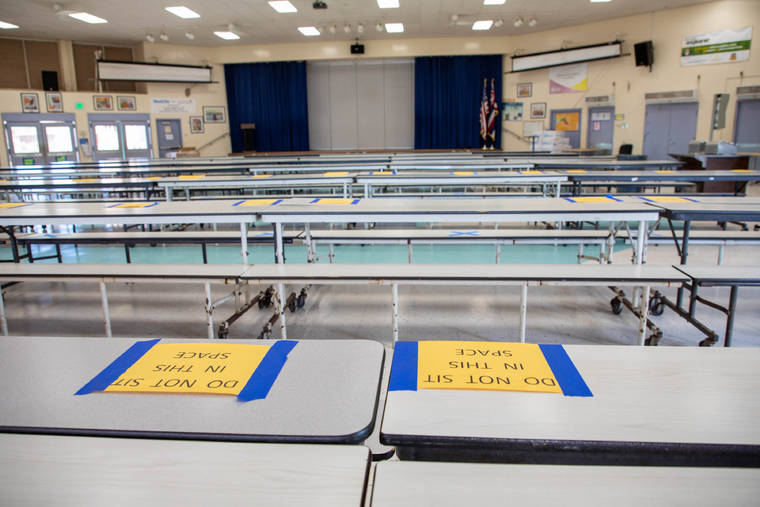The state Department of Education is planning to “Return to Learn,” releasing on Thursday its school reopening plan for the upcoming 2020-21 academic year.
Changes are awaiting those returning to public schools in the fall, but it’s not quite clear yet what school will look like for East Hawaii students.
“As we move forward in our commitment to reopen schools on Aug. 4 for the fall semester, we know that the delivery of instruction in Hawaii, across the nation and globally is going to look very different,” said state Superintendent Christina Kishimoto in a news release. “Our HIDOE ohana has been diligently working on plans for the new school year, growing from our experience navigating a global pandemic and applying lessons learned toward out commitment to high-quality learning and equity of access.”
As part of the plan, there are elementary, middle/intermediate and high school models for reopening.
Those models include face-to-face learning, with all students on campus daily, and a variety of blended learning models that include a combination of in-person learning and structured online distance learning.
According to the DOE, priority for daily face-to-face instruction will be given to students in kindergarten through second grade and vulnerable students, a group that includes children with disabilities, English learners and economically disadvantaged students.
Other health safeguards outlined by the DOE include physical distancing requirements; face coverings to be worn by employees, students and visitors as well as students and drivers on school buses; open windows for greater air circulation; adequate cleaning supplies for schools and offices; and routine and frequent cleaning and disinfection, among others.
Ka‘u-Keaau-Pahoa Complex Area Superintendent Chad Keone Farias said he likes the DOE’s guidelines.
“I’m excited to get kids back face-to-face in an environment we know they learn best in,” he said, adding he’s also excited “to use skills we learned in the fourth quarter around distance learning and technology-based engagement.”
But there’s still a lot of work ahead to ensure the learning environment is safe and there are protocols to clean classrooms and keep keiki in compliance with social distancing requirements.
As of Thursday, schools in the complex area had not made any decisions in regard to learning models they plan to implement. Principals were meeting with teachers Thursday, Farias said.
A decision on what model the Hilo High School will adopt for the school year had not been made as of Thursday, but Principal Jasmine Urasaki said teachers were voting on their preference. However, Urasaki said she suggested the model and schedule the school decides on be conducive at all levels of COVID-19’s community impact.
Students, she said, are the most affected by the pandemic.
“I feel really bad and it’s so unfortunate our students are experiencing this and going through this time because they’re only in high school once and all the high school experiences will be very different from perhaps what they expected or anticipated … I just want everyone to remember and keep our students in at the front of their minds.”
According to the DOE, the school year will maintain the standard 180 instructional days.
The first two weeks of school will consist of half-days with students to assess learning needs and conduct reviews, introduction and meal services, and half-days without students for schools to adjust protocols, conduct employee training and prepare for instruction.
For the full guidelines, visit bit.ly/ReturntoLearnHI.
Email Stephanie Salmons at ssalmons@hawaiitribune-herald.com.






